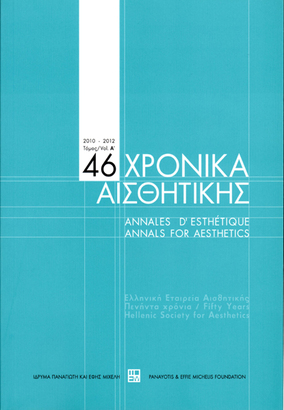Η σχέση του παιδιού με την αρχιτεκτονική και την αισθητική σήμερα
Part of : Χρονικά αισθητικής : ετήσιον δελτίον της Ελληνικής Εταιρείας Αισθητικής ; Vol.46, No.Β, 2010, pages 159-170
Issue:
Pages:
159-170
Parallel Title:
The child’s relationship to architecture and aesthetics today
Section Title:
Αρχιτεκτονική / Architecture
Author:
Abstract:
The child’s relationship to architecture - with reference to how the structured environment and aesthetics are perceived by children - is an issue that has to be reinvestigated today on a completely new basis. The initial contact of children with architecture and aesthetics takes place first in their environment, home, neighbourhood or city, and continues with their education at school, which, at least in our country, is limited. Dealing a lot with computers, video games and contemporary cinema films, children are nowadays initiated into an imaginary world swaying constantly between dream and utopia. As a result, children experience art, architecture and aesthetics in a different way, while relevant changes are taking place at an inconceivably rapid pace. Describing the real situation today, one could generally say that, when playing on the Internet, children live in a state of “cocooning”, as they are completely cut off from their environment. They live in this fake reality, a reality of deception, and are no longer objective observers.This whole technology does not simply open up new worlds, horizons and perspectives, but also, in essence, creates a new process of aesthetic perception, which is, nevertheless, fully guided. Children are more affected by images rather than texts and books, while contemporary technology definitely contributes towards this direction. They live in an era of virtual reality, a hallucination of a “life”, which they are required to experience as a true sensation through contemporary communication media. Thus, new forms of art have been launched, the so-called “Electronic Arts” and, in this way, a new page opens for our technological culture. The crucial issue arising is how and what children will choose among the various available alternatives, when they are faced with the dilemma to select the way to spend their spare time and what consequences this choice may have on their personality and future life.This already established situation creates both risks and opportunities. A mature and realistic evaluation of the new reality and close collaboration of all those involved (state, family and intellectual world) can surely make the best of the tremendous potential offered by these new technologies, leading only to the benefit of children all over the world.
Subject (LC):
Keywords:
αρχιτεκτονική
Notes:
Περιέχει εικόνες




